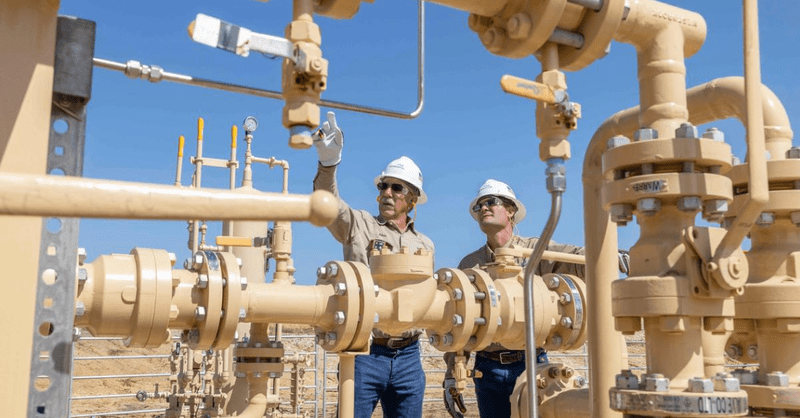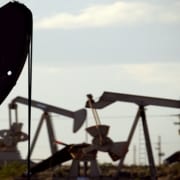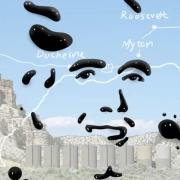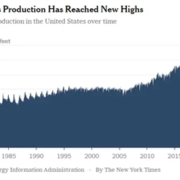⚠️ IMPORTANT LEGAL DISCLAIMER:
The information provided on this page is for general informational purposes only and does not constitute legal, financial, or investment advice. Oil and gas laws, mineral rights regulations, and royalty structures vary significantly by state and jurisdiction. While we strive to provide accurate and up-to-date information, no guarantee is made to that effect, and laws may have changed since publication.
You should consult with a licensed attorney specializing in oil and gas law in your jurisdiction, a qualified financial advisor, or other appropriate professionals before making any decisions based on this material. Neither the author nor the publisher assumes any liability for actions taken in reliance upon the information contained herein.
The oil and gas industry is one of the most lucrative sectors, attracting a wide range of investors seeking returns from resource extraction. A common way to participate in this industry is through royalties, which allow investors to receive a share of revenue from the production of oil and gas without involving in the operational side. However, like any investment, oil and gas royalties come with various risks that need effective management.
In this article, we will explore key risk management strategies that royalty holders can adopt to protect their investments and maximize their returns. By understanding the risks and how to mitigate them, royalty holders can navigate the complexities of this industry and safeguard their financial interests.
Introduction to Oil and Gas Royalties
Oil and gas royalties are payments made to the owners of mineral rights, typically a percentage of the revenue generated from the production of oil or gas from a particular well or field. These royalty payments are usually negotiated in lease agreements between the mineral rights owner and the operator or production company.
For investors who hold royalties, the appeal lies in the ability to earn passive income from the production of natural resources. Unlike working interest owners, royalty holders are not responsible for the operational costs associated with drilling and production. However, royalty holders are exposed to several risks, including price volatility, production variability, and legal complexities.
Understanding these risks is the first step toward managing them effectively.
Understanding Market Price Fluctuations – Risk Management Strategies
One of the primary risks in oil and gas royalties is the volatility of commodity prices. The prices of oil and gas are influenced by a wide range of factors, including global supply and demand, geopolitical events, technological advancements, and environmental regulations. A sudden drop in prices can significantly reduce royalty payments, affecting the income generated from the investment.
Managing Price Volatility
There are several strategies that royalty holders can use to manage the risk of price volatility:
- Diversification: One of the most effective ways to mitigate price risk is by diversifying your portfolio. Instead of relying on royalties from a single well or region, consider investing in royalties from multiple wells across different geographic areas. Diversification reduces the impact of localized price fluctuations and ensures a more stable income stream.
- Hedging Strategies: Some investors may choose to hedge their exposure to price volatility by entering into futures contracts or other derivative instruments. Hedging allows royalty holders to lock in prices for a portion of their expected income, providing protection against sudden price drops.
- Staying Informed: Keeping a close eye on market trends and staying informed about the factors that influence oil and gas prices can help royalty holders make more informed decisions. By monitoring news related to geopolitical tensions, OPEC decisions, and technological advancements, royalty holders can anticipate market changes and adjust their strategies accordingly.
Production Risks and Variability
Another significant risk in oil and gas royalties is production variability. The production levels of a well or field can fluctuate due to several factors, including geological conditions, equipment failures, and operational inefficiencies. Lower-than-expected production can result in reduced royalty payments, especially if the well underperforms or reaches its peak production earlier than anticipated.
Managing Production Risks
Royalty holders can implement several strategies to manage the risks associated with production variability:
- Conducting Due Diligence: Before acquiring oil and gas royalties, it is crucial to conduct thorough due diligence. This includes evaluating the operator’s track record, the geological prospects of the field, and the production history of the well. By understanding the production potential and the operator’s capabilities, royalty holders can make more informed investment decisions and minimize the risk of production shortfalls.
- Monitoring Well Performance: Royalty holders should regularly monitor the performance of the wells they are invested in. Most operators provide production reports, which include details about daily production levels, operating expenses, and any maintenance issues. Keeping track of this information can help royalty holders identify potential problems early and take corrective action if necessary.
- Diversification: As with price risk, diversification can also be an effective strategy for managing production risk. Investing in royalties from multiple wells or regions reduces the likelihood that a single well’s poor performance will significantly impact your overall income. By spreading your investment across several wells, you create a more stable and predictable income stream.
Legal and Regulatory Risks
The legal and regulatory environment surrounding oil and gas production is complex and can pose significant risks to royalty holders. Changes in regulations, disputes over mineral rights ownership, or environmental lawsuits can lead to delays in production or even the cessation of operations, resulting in reduced royalty payments.
Managing Legal and Regulatory Risks
To mitigate legal and regulatory risks, royalty holders should consider the following strategies:
- Reviewing Lease Agreements: The lease agreement is the legal document that outlines the terms of the royalty payments and the responsibilities of the operator. Royalty holders should carefully review lease agreements to ensure that their rights are protected and that they fully understand the terms of the agreement, including the royalty percentage, the duration of the lease, and any provisions for termination or renegotiation.
- Engaging Legal Counsel: Given the complexity of oil and gas laws, it is advisable to consult with legal counsel who specializes in mineral rights and royalty interests. Legal professionals can help you navigate the nuances of lease agreements, resolve disputes, and ensure that your interests are protected in the event of regulatory changes or legal challenges.
- Staying Updated on Regulations: Oil and gas production is subject to a wide range of federal, state, and local regulations, many of which are subject to change. Royalty holders should stay informed about any changes in regulations that could impact production, such as new environmental laws, tax changes, or restrictions on drilling. By staying updated, royalty holders can anticipate potential challenges and take proactive steps to protect their investments.
Operator Risk and Management Quality
The performance and financial stability of the operator managing the well or field play a critical role in the success of oil and gas royalty investments. Operators are responsible for managing the drilling, production, and maintenance of the wells, and their decisions directly affect the profitability of the operation. Poor management, financial instability, or operational inefficiencies can lead to production delays, increased costs, and reduced royalty payments.
Managing Operator Risk
Royalty holders can take several steps to minimize operator risk:
- Researching Operator Reputation: Before acquiring royalties, it is essential to research the reputation and track record of the operator. Look for operators with a proven history of successful production, financial stability, and adherence to regulatory requirements. Operators with a strong track record are more likely to manage the wells efficiently and ensure consistent production.
- Monitoring Operator Performance: Once invested, royalty holders should regularly monitor the operator’s performance by reviewing production reports and staying informed about any operational or financial issues. If an operator begins to experience financial difficulties or fails to meet production targets, royalty holders may need to take action, such as renegotiating the lease or seeking legal recourse.
- Diversifying Across Operators: To reduce the impact of poor operator performance, consider diversifying your royalties across multiple operators. This strategy ensures that if one operator underperforms, the impact on your overall income is limited. Diversifying across operators with different strengths and expertise can also provide greater stability and reduce the overall risk of your portfolio.
Environmental and Regulatory Compliance – Risk Management Strategies
The Environmental regulations are becoming increasingly stringent in the oil and gas industry, and failure to comply with these regulations can result in hefty fines, production shutdowns, and damage to the operator’s reputation. With that, the environmental risks, such as spills, leaks, or contamination, can also lead to costly remediation efforts and legal liabilities.
Managing Environmental Risks
Royalty holders can take several steps to manage environmental risks:
- Evaluating Environmental Compliance: Before investing in royalties, assess the operator’s track record on environmental compliance. Look for operators with a strong commitment to environmental responsibility and a history of adhering to regulatory standards. Operators who prioritize environmental compliance are less likely to face costly fines or production delays due to regulatory violations.
- Staying Informed About Environmental Regulations: Environmental laws and regulations are constantly evolving, and royalty holders need to stay informed about any changes that could impact production. By staying updated on new environmental regulations, you can anticipate potential risks and take steps to mitigate their impact on your royalty payments.
- Assessing Environmental Impact of Wells: Some wells are more environmentally sensitive than others, depending on factors such as location, proximity to water sources, and the extraction methods used. When evaluating royalty opportunities, consider the environmental impact of the wells and the potential risks associated with spills, contamination, or emissions. Wells with a lower environmental impact may carry less risk of regulatory fines and production shutdowns.
Technological Advances and Their Impact on Royalties
Technological advancements in the oil and gas industry, such as horizontal drilling and hydraulic fracturing (fracking), have revolutionized resource extraction by improving efficiency and increasing production. However, technological risks, such as equipment failures or the adoption of unproven technologies, can also pose challenges for royalty holders.
Managing Technological Risks Through Risk Management Strategies
To manage the risks associated with technology in oil and gas production, consider the following strategies:
- Evaluating Technology Used in Extraction: When investing in royalties, assess the technology being used by the operator. Operators who use modern, proven technologies are more likely to achieve higher production levels and maintain consistent output. However, operators relying on untested or experimental technologies may face higher risks of equipment failure or lower-than-expected production.
- Monitoring Technological Developments: The oil and gas industry is constantly evolving, with new technologies emerging that can improve production efficiency and reduce costs. Royalty holders should stay informed about technological developments in the industry and assess how these advancements may impact their investments. For example, the adoption of new drilling techniques or enhanced recovery methods may increase production levels and improve royalty income.
- Diversifying Across Technological Approaches: Just as diversification can mitigate price and production risks, it can also help manage technological risks. Investing in royalties from wells that use different extraction methods can reduce the impact of technological failures or inefficiencies. By diversifying across wells with different technologies, you create a more resilient portfolio that is better equipped to handle technological challenges.
In Conclusion
Oil and gas royalties offer the potential for significant returns, but they also come with various risks that needs careful management. From market price volatility to production variability, legal complexities, operator performance, and environmental compliance, royalty holders must adopt a proactive approach to mitigate these risks and protect their investments.
By implementing strategies such as diversification, conducting thorough due diligence, staying informed about market trends and regulations, and engaging with experienced legal and financial professionals, royalty holders can navigate the complexities of the oil and gas industry and maximize their returns. Effective risk management is the key to ensuring a stable and profitable investment in oil and gas royalties.
If you have further questions related to Risk Management Strategies, feel free to reach out to us here.











